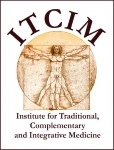
Ing. Andrea Kestlerová, Ph.D. - Czech Republic
Abstract of the presentation
Effectiveness of Treatment in Infertile Women with Activated Cellular Immunity
Branch: Other
Clinical Sample: The study included only couples (n = 338) in which the woman tested positive for specific cellular immunity using the MIF test at the initial examination, and the male partner tested negative for antisperm autoantibodies using the MAR test. Of these women, 303 presented with infertility and 35 with recurrent miscarriage.
Methods: Specific cellular immunity was measured by the leukocyte migration inhibition test under agarose (MIF test) using antigens from the partner’s sperm, a mixed donor sperm sample, and trophoblast cells. Results were statistically evaluated using the Shapiro–Wilk test, ANOVA, Kruskal–Wallis test, and the Dwass–Steel–Critchlow–Fligner post hoc test. Statistical significance was set at p < 0.05.
Results and Discussion: All 338 women underwent standard immunological treatment, which included management of any gynecological infections, temporary avoidance of contact with ejaculate, and immunomodulatory therapy with low doses of corticosteroids. Based on treatment outcomes, patients were classified into four groups: (A) live birth within two years of the initial immunological examination; (B) live birth within 2–3 years; (C) live birth within 3–4 years; and (D) no live birth within four years. Of these, 208 patients (61.5%) conceived and delivered a healthy infant within two years of the initial examination (group A). Within four years, 264 women (78.1%; groups A + B + C) had delivered a viable infant. In group D (74 women; 21.9%), persistent MIF test positivity at follow-up appeared to be, to some extent, a predictor of reproductive failure. Overall, the immune response to treatment varied considerably between individuals, although no statistically significant differences in initial test values were found between groups.
Conclusion: The study findings suggest that the chosen diagnostic approach was appropriate and the applied treatment method highly effective, as a relatively high proportion of couples achieved reproductive success following treatment.
Please note that some of the texts also include machine-generated translations.





